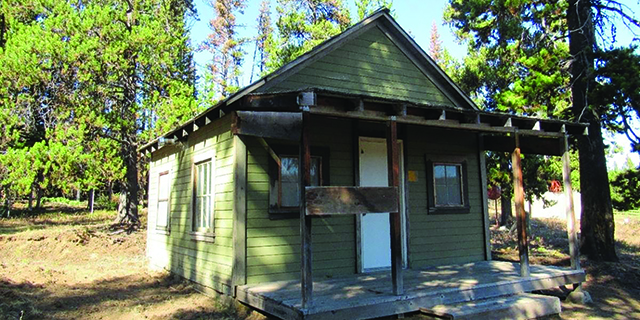Wandschneider: Climate change and border walls
Published 8:20 am Wednesday, January 16, 2019
Climate Change and Border Walls
It’s ironic that the people most worried about illegal immigration—President Trump included—seem to be most skeptical of climate change. My own tact is to skip those loaded words, and just talk about worldwide drought and its impacts on conflict and migration.
Trending
A couple of years ago I read a book called The Great Warming, by Brian Fagan. It’s a chronicle of world history from about 800 AD to 1300 AD, a period in which the earth’s temperatures warmed, my Norwegian ancestors settled Iceland, Greenland, and Newfoundland, and England produced wine grapes. The population of Europe exploded, but when Fagan gets to Africa and what would become the Americas, the picture turns to drought—and devastation. California’s live oak tree forests died and the coastal population was reduced by half. The Mayan cities with their sophisticated irrigation systems collapsed and populations moved to the countryside—archeologists continue to find these ancient cities.
Fagan uses interesting techniques to trace the warming—thousand year records of wine grape harvest dates, core sampling in ice, etc. He says that we are only now beginning to understand the role of ocean currents and sun activity in the huge shifts that move earth’s temperatures and annual rainfalls. In high school and college in California in the 1950s and 60s, I don’t remember hearing about El Nino and La Nina.
When we are talking about weather and climate impact on migrations, we don’t need to account for how much of the changing patterns of temperature and drought are due to El Nino and other ocean currents, sun activity, or our own, human intrusions with fossil fuels and carbon emissions. What we need to look at—and acknowledge—is that people move when they are hungry, and they get hungry when crops don’t grow—remember the “Dust Bowl”? They move from flooded coastlands and burning forests. They move when they are scared, and they get scared when resources are limited and the fight over resources explodes in insurrection and war.
I spent some time in the Middle East 50 years ago, and think I have some notion of what goes on their politically, but I completely missed the connection between the Arab Spring and drought. Some people were paying attention. Henry Fountain wrote in the New York Times in March 2015 that
An extreme drought in Syria between 2006 and 2009 was most likely due to climate change, and… the drought was a factor in the violent uprising that began there in 2011… Studies… showed that the extreme dryness, combined with other factors, including misguided agricultural and water-use policies of the Syrian government, caused crop failures that led to the migration of as many as 1.5 million people from rural to urban areas. This in turn added to social stresses that eventually resulted in the uprising against President Bashar al-Assad in March 2011.
A few years ago an exchange student from tiny Jordan told us that her country’s population is 10 million, and has over a million Syrian refugees. Turkey, the country I lived in, has millions of refugees from Syria and Iraq. And Europe, of course, millions more—from Syria, Afghanistan, Iraq, and from central, eastern, and northern Africa. Way back in 2007, the BBC said that there were over 4 million African refugees in Europe, and the stream of refugees from Africa and hot, drought stricken areas of the Middle East continues.
Trending
Closer to home, Gustavo Palencio wrote recently for Reuters that “A severe drought has ravaged crops in Central America and as many as 2.81 million people are struggling to feed themselves.” He continues: “The drought, which is also affecting South America, has been particularly hard on the so-called ‘dry corridor’ of Central America, which includes southern Guatemala, northern Honduras and western El Salvador.”
Will a wall keep these hungry people out? From the Great Wall in China to the Maginot Line in France—a line of concrete fortifications, obstacles, and weapon installations built by France in the 1930s to deter an invasion from Germany—walls have not been effective in keeping hungry people from moving. Germany, awash in poverty and outlandish inflation, found a savior in Hitler—a man who promised them “Lebensraum,” room to live across a wide swath of Europe. Maginot did not stop him.
In the real world, countries like ours—and places like Wallowa County, Oregon—that are lush, best do what we can to deter world-wide drought, flood and fire, and encourage accommodating development in the dangerous, mostly hot and dry places in the US and in other countries where people live under the extreme stresses of heat, drought, flood, fire, poverty, and human strife. Hungry and scared, wall or no, they’ll be at our door.









